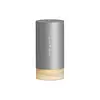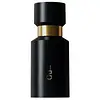What's inside
What's inside
 Key Ingredients
Key Ingredients

 Benefits
Benefits

 Concerns
Concerns

 Ingredients Side-by-side
Ingredients Side-by-side

Water
Skin ConditioningCaprylyl Methicone
Skin ConditioningPhenyl Trimethicone
Skin ConditioningCI 77891
Cosmetic ColorantButylene Glycol
HumectantIsododecane
EmollientTrimethylsiloxysilicate
EmollientLauryl PEG-8 Dimethicone
Propylene Glycol
HumectantSynthetic Fluorphlogopite
CI 77492
Cosmetic ColorantCyclopentasiloxane
EmollientGlycerin
HumectantDisteardimonium Hectorite
StabilisingLauryl PEG-9 Polydimethylsiloxyethyl Dimethicone
Skin ConditioningTriethoxycaprylylsilane
Magnesium Sulfate
Phenoxyethanol
PreservativeCI 77491
Cosmetic ColorantButyrospermum Parkii Butter
Skin ConditioningPolyglyceryl-10 Oleate
Skin ConditioningSqualane
EmollientAlumina
AbrasiveCI 77499
Cosmetic ColorantPolymethylsilsesquioxane
Dimethicone/Vinyl Dimethicone Crosspolymer
Skin ConditioningTocopheryl Acetate
AntioxidantPEG-8
HumectantPanthenol
Skin ConditioningIsostearyl Alcohol
EmollientEthylhexylglycerin
Skin ConditioningSalicylic Acid
MaskingDisodium EDTA
Hydrogenated Lecithin
EmulsifyingCentella Asiatica Extract
CleansingIsostearamidopropyl Ethyldimonium Ethosulfate
Sodium Hydroxide
BufferingSodium Hyaluronate
HumectantCeramide NP
Skin ConditioningCarthamus Tinctorius Seed Oil
MaskingOlea Europaea Fruit Oil
MaskingWhey Protein
Skin ConditioningWater, Caprylyl Methicone, Phenyl Trimethicone, CI 77891, Butylene Glycol, Isododecane, Trimethylsiloxysilicate, Lauryl PEG-8 Dimethicone, Propylene Glycol, Synthetic Fluorphlogopite, CI 77492, Cyclopentasiloxane, Glycerin, Disteardimonium Hectorite, Lauryl PEG-9 Polydimethylsiloxyethyl Dimethicone, Triethoxycaprylylsilane, Magnesium Sulfate, Phenoxyethanol, CI 77491, Butyrospermum Parkii Butter, Polyglyceryl-10 Oleate, Squalane, Alumina, CI 77499, Polymethylsilsesquioxane, Dimethicone/Vinyl Dimethicone Crosspolymer, Tocopheryl Acetate, PEG-8, Panthenol, Isostearyl Alcohol, Ethylhexylglycerin, Salicylic Acid, Disodium EDTA, Hydrogenated Lecithin, Centella Asiatica Extract, Isostearamidopropyl Ethyldimonium Ethosulfate, Sodium Hydroxide, Sodium Hyaluronate, Ceramide NP, Carthamus Tinctorius Seed Oil, Olea Europaea Fruit Oil, Whey Protein
Water
Skin ConditioningCyclopentasiloxane
EmollientTitanium Dioxide
Cosmetic ColorantEthylhexyl Methoxycinnamate
UV AbsorberMethyl Trimethicone
Skin ConditioningGlycerin
HumectantButylene Glycol
HumectantEthylhexyl Salicylate
UV AbsorberPolymethylsilsesquioxane
Isononyl Isononanoate
EmollientNiacinamide
Smoothing1,2-Hexanediol
Skin ConditioningPolysorbate 60
EmulsifyingTridecyl Trimellitate
EmollientMethyl Methacrylate Crosspolymer
Triceteareth-4 Phosphate
EmulsifyingGlycol Stearate
EmollientPotassium Cetyl Phosphate
EmulsifyingBis-Ethylhexyloxyphenol Methoxyphenyl Triazine
Skin ConditioningGlyceryl Stearate
EmollientPEG-100 Stearate
PEG-2 Stearate
EmulsifyingVp/Eicosene Copolymer
Ammonium Acryloyldimethyltaurate/Vp Copolymer
Aluminum Hydroxide
EmollientPolyhydroxystearic Acid
EmulsifyingPEG-10 Dimethicone
Skin ConditioningTriethoxycaprylylsilane
Stearic Acid
CleansingSodium Acrylate/Sodium Acryloyldimethyl Taurate Copolymer
Emulsion StabilisingAdenosine
Skin ConditioningPEG-240
HumectantNeopentyl Glycol Diethylhexanoate
EmollientIsohexadecane
EmollientTrisodium Ethylenediamine Disuccinate
Polysorbate 80
EmulsifyingSorbitan Oleate
EmulsifyingPotassium Laurate
EmulsifyingBHT
AntioxidantBakuchiol
AntimicrobialMadecassoside
AntioxidantHyaluronic Acid
HumectantHydrolyzed Hyaluronic Acid
HumectantSodium Hyaluronate
HumectantArtemisia Capillaris Extract
Phenoxyethanol
PreservativeArtemisia Princeps Leaf Extract
Skin ConditioningXanthium Strumarium Fruit Extract
Skin ConditioningPrunella Vulgaris Flower/Leaf/Stem Extract
Skin ProtectingCetraria Islandica Extract
CleansingOleanolic Acid
Skin ConditioningEthylhexylglycerin
Skin ConditioningCopper Tripeptide-1
Skin ConditioningAcetyl Hexapeptide-8
HumectantCI 77492
Cosmetic ColorantCI 77491
Cosmetic ColorantCI 77499
Cosmetic ColorantWater, Cyclopentasiloxane, Titanium Dioxide, Ethylhexyl Methoxycinnamate, Methyl Trimethicone, Glycerin, Butylene Glycol, Ethylhexyl Salicylate, Polymethylsilsesquioxane, Isononyl Isononanoate, Niacinamide, 1,2-Hexanediol, Polysorbate 60, Tridecyl Trimellitate, Methyl Methacrylate Crosspolymer, Triceteareth-4 Phosphate, Glycol Stearate, Potassium Cetyl Phosphate, Bis-Ethylhexyloxyphenol Methoxyphenyl Triazine, Glyceryl Stearate, PEG-100 Stearate, PEG-2 Stearate, Vp/Eicosene Copolymer, Ammonium Acryloyldimethyltaurate/Vp Copolymer, Aluminum Hydroxide, Polyhydroxystearic Acid, PEG-10 Dimethicone, Triethoxycaprylylsilane, Stearic Acid, Sodium Acrylate/Sodium Acryloyldimethyl Taurate Copolymer, Adenosine, PEG-240, Neopentyl Glycol Diethylhexanoate, Isohexadecane, Trisodium Ethylenediamine Disuccinate, Polysorbate 80, Sorbitan Oleate, Potassium Laurate, BHT, Bakuchiol, Madecassoside, Hyaluronic Acid, Hydrolyzed Hyaluronic Acid, Sodium Hyaluronate, Artemisia Capillaris Extract, Phenoxyethanol, Artemisia Princeps Leaf Extract, Xanthium Strumarium Fruit Extract, Prunella Vulgaris Flower/Leaf/Stem Extract, Cetraria Islandica Extract, Oleanolic Acid, Ethylhexylglycerin, Copper Tripeptide-1, Acetyl Hexapeptide-8, CI 77492, CI 77491, CI 77499
Ingredients Explained
These ingredients are found in both products.
Ingredients higher up in an ingredient list are typically present in a larger amount.
Butylene Glycol (or BG) is used within cosmetic products for a few different reasons:
Overall, Butylene Glycol is a safe and well-rounded ingredient that works well with other ingredients.
Though this ingredient works well with most skin types, some people with sensitive skin may experience a reaction such as allergic rashes, closed comedones, or itchiness.
Learn more about Butylene GlycolCi 77491 is also hydrated iron III oxide. It's sole purpose is to give a red/pink hue to products.
Iron III oxides are classified as inorganic chemicals for coloring.
Synthetically created Ci 77491 is considered safer than those naturally found. This is because the synthetically created version may contain less impurities. Iron oxides are generally non-toxic and non-allergenic.
Learn more about CI 77491Ci 77492 is also hydrated iron III oxide. It's sole purpose is to give a yellow hue to products.
Iron III oxides are classified as inorganic chemicals for coloring.
Synthetically created Ci 77492 is considered safer than those naturally found. This is because the synthetically created version may contain less impurities. Iron oxides are generally non-toxic and non-allergenic.
Learn more about CI 77492Ci 77499 is also hydrated iron III oxide. It is created from mixing red and black iron oxides. This helps give shades of darkness to a product.
Iron III oxides are classified as inorganic chemicals for coloring.
Cyclopentasiloxane, or D5, is a silicone used to improve texture of products and trap moisture.
D5 is considered lightweight and volatile. Volatile means it evaporates quickly after application. Once evaporated, D5 leaves a thin barrier that helps keep skin hydrated.
It is also an emollient. Emollients help soften the skin and prevent water loss. Silicones create a silky texture in products. D5 helps other ingredients become more spreadable.
Studies show D5 is safe to use in skincare products. We recommend speaking with a skincare professional if you have concerns.
Learn more about CyclopentasiloxaneEthylhexylglycerin (we can't pronounce this either) is commonly used as a preservative and skin softener. It is derived from glyceryl.
You might see Ethylhexylglycerin often paired with other preservatives such as phenoxyethanol. Ethylhexylglycerin has been found to increase the effectiveness of these other preservatives.
Glycerin is already naturally found in your skin. It helps moisturize and protect your skin.
A study from 2016 found glycerin to be more effective as a humectant than AHAs and hyaluronic acid.
As a humectant, it helps the skin stay hydrated by pulling moisture to your skin. The low molecular weight of glycerin allows it to pull moisture into the deeper layers of your skin.
Hydrated skin improves your skin barrier; Your skin barrier helps protect against irritants and bacteria.
Glycerin has also been found to have antimicrobial and antiviral properties. Due to these properties, glycerin is often used in wound and burn treatments.
In cosmetics, glycerin is usually derived from plants such as soybean or palm. However, it can also be sourced from animals, such as tallow or animal fat.
This ingredient is organic, colorless, odorless, and non-toxic.
Glycerin is the name for this ingredient in American English. British English uses Glycerol/Glycerine.
Learn more about GlycerinPhenoxyethanol is a preservative that has germicide, antimicrobial, and aromatic properties. Studies show that phenoxyethanol can prevent microbial growth. By itself, it has a scent that is similar to that of a rose.
It's often used in formulations along with Caprylyl Glycol to preserve the shelf life of products.
Polymethylsilsesquioxane is a silicone used as a film forming agent.
When applied to the skin, this ingredient creates an invisible film on the surface. This film still allows oxygen to pass through, but prevents moisture from escaping. This can help condition and hydrate the skin. It also leaves a silky feel when applied.
Polymethylsilsesquioxane has not been shown to clog pores. It has been deemed safe to use up to 55%, but most cosmetics use much less.
If you have concerns about using this ingredient, we recommend speaking with a professional.
Learn more about PolymethylsilsesquioxaneSodium Hyaluronate is hyaluronic acid's salt form. It is commonly derived from the sodium salt of hyaluronic acid.
Like hyaluronic acid, it is great at holding water and acts as a humectant. This makes it a great skin hydrating ingredient.
Sodium Hyaluronate is naturally occurring in our bodies and is mostly found in eye fluid and joints.
These are some other common types of Hyaluronic Acid:
Learn more about Sodium HyaluronateTriethoxycaprylylsilane is a silicone used to bind and stabilize ingredients.
As an emulsifier, it helps prevent ingredients from separating. This can help elongate the shelf life of products.
Triethoxycaprylylsilane is often used to coat mineral sunscreens ingredients to help give a better feel. It also helps reduce oxidative stress in sunscreens.
Learn more about TriethoxycaprylylsilaneWater. It's the most common cosmetic ingredient of all. You'll usually see it at the top of ingredient lists, meaning that it makes up the largest part of the product.
So why is it so popular? Water most often acts as a solvent - this means that it helps dissolve other ingredients into the formulation.
You'll also recognize water as that liquid we all need to stay alive. If you see this, drink a glass of water. Stay hydrated!
Learn more about Water